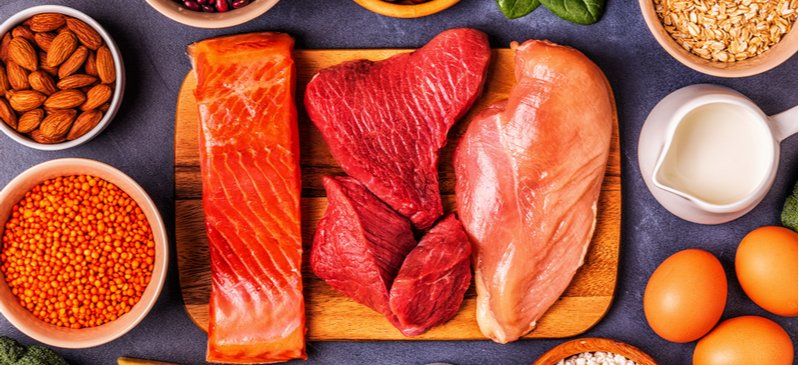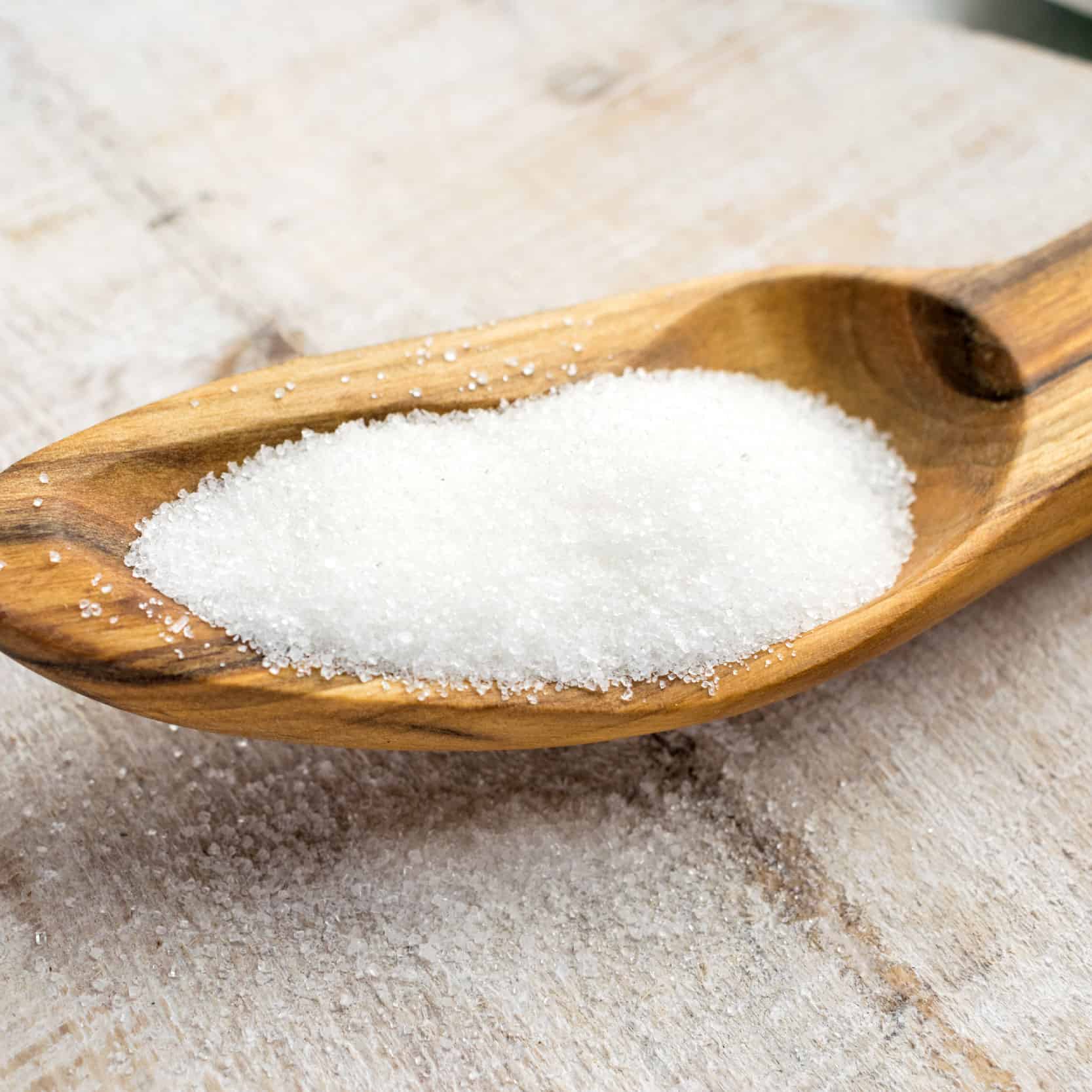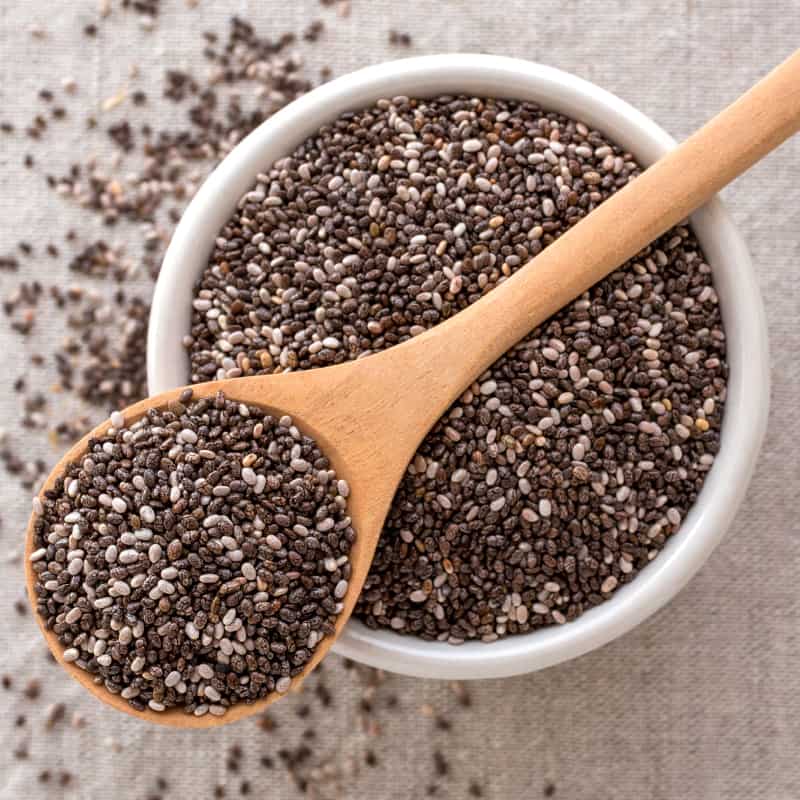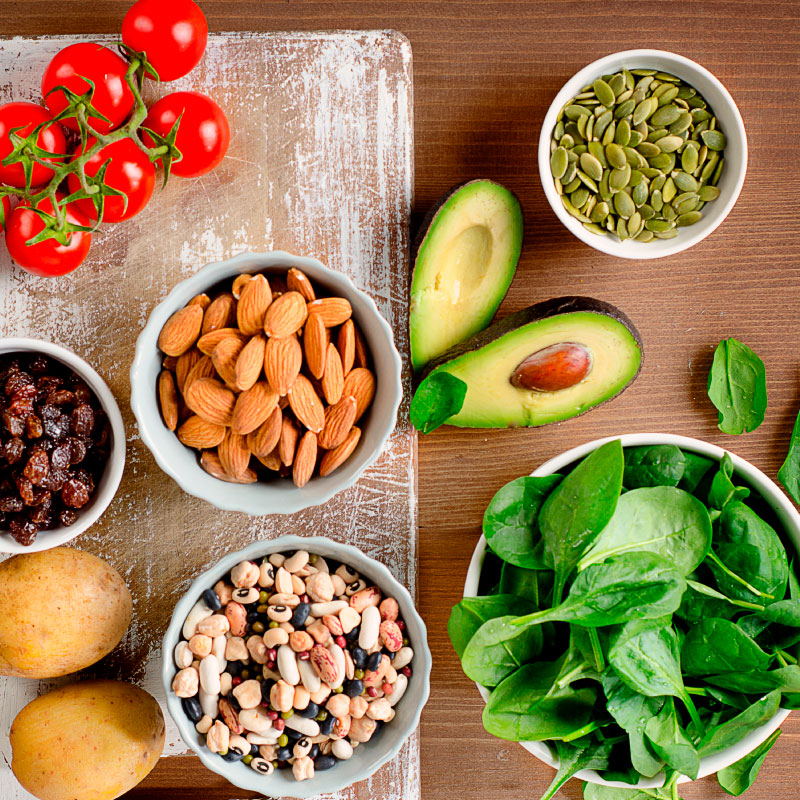This Dr. Axe content is medically reviewed or fact checked to ensure factually accurate information.
With strict editorial sourcing guidelines, we only link to academic research institutions, reputable media sites and, when research is available, medically peer-reviewed studies. Note that the numbers in parentheses (1, 2, etc.) are clickable links to these studies.
The information in our articles is NOT intended to replace a one-on-one relationship with a qualified health care professional and is not intended as medical advice.
This article is based on scientific evidence, written by experts and fact checked by our trained editorial staff. Note that the numbers in parentheses (1, 2, etc.) are clickable links to medically peer-reviewed studies.
Our team includes licensed nutritionists and dietitians, certified health education specialists, as well as certified strength and conditioning specialists, personal trainers and corrective exercise specialists. Our team aims to be not only thorough with its research, but also objective and unbiased.
The information in our articles is NOT intended to replace a one-on-one relationship with a qualified health care professional and is not intended as medical advice.
What Is the Slow Carb Diet? Potential Benefits for Weight Loss & More
July 20, 2020

You don’t have to be a perfectly healthy eater all the time to lose weight and improve your health in other ways. The slow carb diet is one example of a flexible eating plan that can help you reach your goal weight, even while taking into account the need to stray from your diet here and there.
By eating low-glycemic carbs (or “slow carbs” as they’re called) the majority of the time, in conjunction with consistently exercising and taking some optional supplements, you can still reap benefits such as fat loss, improved blood sugar levels, and decreased appetite and cravings.
What Is the Slow Carb Diet?
The slow carb diet is a diet that involves eating mostly low-glycemic foods the majority of the week. The diet was created by Tim Ferriss, author and podcast host, and detailed in his 2010 book “The 4-Hour Body.”
How fast can you lose weight on the slow carb diet? Ferris says that by following the slow carb diet, it’s possible to lose 20 pounds of body fat in 30 days “by optimizing any of three factors: exercise, diet, or a drug/supplement regimen.”
However, results from all low-carb diets are known to vary greatly depending on someone’s starting weight, workouts, general health, how strictly she or he follows the diet and other factors.
Rules/Principles
There are several main principles of the slow carb diet:
- Eat only no-carb or low-glycemic carbs six out of seven days of the week. Low-glycemic carbs include vegetables and beans, while no-carb foods include meats, eggs, fish and fats like oil and butter.
- Don’t eat fruit, added sugar or “white carbs” six out of seven days of the week.
- Avoid consuming sugary drinks.
- Limit yourself to four meals per day, which means roughly eating every four hours but not snacking. To make the diet easier, eat the same few meals over and over again.
- One day per week, have a “cheat day” during which you can eat whatever you want. Ideally your cheat day should be after following the other rules for six consecutive days.
While these are not considered key rules of the diet, the following are habits that are also recommended to maximize results:
- Taking cold showers
- Eating 30 grams of protein within 30 minutes of waking up
- Exercising at least three to four times per week
- Measuring your weight, body fat and total inches each week to track results
- Take 30 minutes to eat your food
- Keep foods out of your home/office/etc. that you tend to overeat
Foods to Eat
What do you eat on the slow carb diet? The diet mostly consists of eating lean meats, beans and veggies (cooked with spices and some healthy fats), while avoiding added sugars, fruit, refined carbs (bread, potatoes, pasta) and sugary drinks.
Here are the foods that are included in the slow carb diet:
- Eggs and egg whites
- Chicken breast or thigh
- Beef (preferably grass-fed)
- Fish, such as salmon and sardines
- Pork
- Legumes/beans, including lentils, black beans, pinto beans, etc.
- Non-starchy vegetables, including leafy greens like spinach and collards, broccoli, cauliflower or any other cruciferous vegetables, mushrooms, asparagus, peas, green beans, tomatoes and avocados, etc.
- Fermented veggies like sauerkraut and kimchi (which provide probiotics that support gut health)
- Tempeh and tofu
- Nuts and seeds, like pumpkin seeds, almonds, flaxseeds, chia seeds and cashews
- No-calorie/low-calorie beverages, like coffee, tea and water, plus a small amount of red wine
- Spices and herbs, including sea salt which is recommended to replenish lost sodium, and condiments like mustards, vinegars, stevia, garlic and salsa
- Small amounts of butter, olive oil, coconut oil, macadamia oil and avocado oil
Ideally each meal should include a decent serving of protein foods (mostly animal proteins), vegetables, legumes and a small amount of fat. Recall that Ferris recommends eating the main food groups about every four hours/about four meals per day.
You can eat as much as you like of the above foods, but overall the idea is to “keep things simple” in terms of preparation and recipes. This makes the diet easier to stick with and limits excuses.
Foods to Avoid
Is oatmeal allowed on slow carb diet? What about other grains — for example, can you eat brown rice on the slow carb diet?
The answer is: no and no. All grains and “white carbohydrates” are excluded six out of seven days of the week, as are fruit and sweetened/caloric drinks.
This means that foods to avoid on the slow carb diet include:
- All bread
- Rice and other grains, including whole grains like quinoa, brown rice, etc.
- All fruit (besides tomatoes and avocados)
- Cereals
- Potatoes
- Pasta
- Tortillas
- Cookie, cakes, pastries and other desserts
- Ice cream and other sweetened dairy products
- Fried foods made with breading
- Regular milk and sweetened milks (including plant/nut/soy milk)
- Soft drinks, fruit juices and other sugary drinks
- White wine or beer (although small amounts of dry-style red wines are permitted)
Supplements to Consume
Supplements are not required but are encouraged, since they may make it easier to stick to the diet by suppressing your appetite and supporting recovery and benefits related to your workouts.
Ferris suggests taking these dietary supplements while following the diet: potassium, magnesium and calcium.
The reason you may want to include more of these minerals/electrolytes in your routine via both foods and supplements is because the slow carb diet causes increased urination and loss of excess water and electrolytes in some people. This is especially true if you enter ketosis while following the diet (although this won’t necessarily happen), which happens when your body starts producing ketone bodies to be burned for energy rather than carbohydrates.
If you’re open to taking additional supplements, Ferris recommends:
- policosanol
- alpha lipoic acid
- green tea extract (which contains EGCG)
- garlic extract
These supplements provide benefits, such as:
- giving you more energy
- supporting a healthy metabolism
- fighting oxidative stress
- supporting concentration/focus
- reducing inflammation
While not limited to the slow carb diet, other supplements that might be helpful if you’re looking to improve your overall weight and health include a good-quality probiotic, multivitamin and vitamin D supplement — which can help support gut health, energy, immune function and more.
Cheat Day
After following the slow carb diet for six consecutive days, you can have a “cheat day” in which you give yourself permission to eat anything you want, in basically whatever quantities you desire.
While your cheat day can fall on whatever day of the week works best for you, based on your schedule, it’s recommended to have a cheat day on Saturday if you have a typical Monday-Friday work schedule, since you’ll likely socialize most on the weekend.
The idea behind having a cheat day once per week is this: By spiking your caloric intake you may help support long-term fat loss by ensuring that your metabolic rate doesn’t start falling due to low calorie intake. Dieting/cutting calories can actually take a toll on thyroid function, which can lead to your body burning fewer calories and more difficulty losing weight.
According to Ferris, “There are no limits or boundaries during this day of gluttonous enjoyment. There is absolutely no calorie counting on this diet, on this day or any other.”
Benefits
1. Helps Lead to Weight Loss
You’re likely to experience many of the same benefits of a low-carb diet while including only slow carbs in your meals. One such benefit is weight loss, the thing that initially makes low-carb diets attractive to most people.
This diet can lead to weight loss by decreasing your appetite and cravings, since studies show that diets high in satiating fiber and protein can help decrease weight gain/obesity. This approach can also allow you to cut calories without feeling very hungry.
If you’re working out, it may also help you maintain some muscle mass while losing body fat.
Another potential benefit of low-carb diets is that they can help lower release of insulin, a critical hormone that produces an anabolic, fat-storing state. Lower insulin secretion may have benefits extending beyond metabolic health too, including improved cardiometabolic function.
While not a randomized, controlled clinical trial, the company Lift says that it conducted a four-week trial of this diet with 3,500 people and uncovered these results:
- 84 percent of finishers lost weight
- the average weight loss was 8.6 pounds
- 14 percent of people lost more than 14 pounds during the four-week period
2. Can Support Healthy Blood Sugar Levels
Because the diet is high in fiber and protein but low in sugar and carbs, there’s evidence to suggest it can help to normalize blood sugar levels, improve glycemic control, and decrease the risk for issues like insulin resistance, type 2 diabetes and metabolic syndrome.
3. Helps You Maintain Long-term Motivation and Results
While the diet includes only a limited number of slow carb foods for the majority of the week, there is some flexibility when it comes to the weekends, during your once weekly cheat day.
By giving yourself a break and indulging in your favorite foods, you might be more likely to “eat clean” and stick to the plan the rest of the week, since you know that an opportunity to “cheat” on your strict diet is right around the corner. This can decrease feelings of deprivation, reducing the chance that you’ll give up on the diet altogether.
Including a cheat day in your diet may also help keep hunger in check by potentially increasing secretion of leptin, a hormone that helps make you feel full.
4. May Save You Money and Time
One of the things that people seem to like about the diet is that it’s repetitive, easy to follow and generally pretty inexpensive. You might find that it helps you get into the habit of cooking at home more since the meals are so simple — and can allow you to stick to a budget thanks to cheap foods like seasonal veggies and beans — plus it doesn’t require any fancy or hard-to-find ingredients.
Risks and Side Effects
Overall, the slow carb diet seems to be safe for most people, but there are some downsides to consider — such as avoiding fruit and starchy veggies, eating lots of animal protein, and needing to stay away from most carbs and sugar.
Overdoing things during a cheat day can also be risky, since this might slow down your efforts, minimize weight loss, cause digestive issues and lead to even more cravings among some people — especially if you eat lots of highly processed foods during your cheat day that are generally unhealthy.
Including plant proteins in your meals, such as beans, lentils and tempeh, is a good way to keep your meat intake to a lower volume, if high consumption of animal proteins is something you’re concerned about, such as because of the environmental impact.
Eating the same meals over and over might become repetitive and can limit the array of nutrients you consume. If you find that you’re feeling sluggish or overly hungry, you might consider including a bit more variety and carbs in your diet.
If you do choose to stick to the diet, you can limit the risk of experiencing side effects by drinking plenty of water, taking a good quality multivitamin, and eating lots of vegetables and fiber to help provide you with vitamins, minerals and other nutrients like antioxidants.
Sample Meal Plan
Here’s an idea of what your day may look like while following this diet:
- Breakfast: Scrambled eggs, black beans and mixed vegetables.
- Lunch: Grass-fed beef, pinto beans, mixed vegetables and guacamole — or a spinach salad topped with hard-boiled egg, extra veggies and diced chicken, tuna or salmon.
- Dinner: Chicken or fish, lentils and mixed vegetables — or beef with asparagus and a side of pinto beans.
Need more ideas for meals to make while following a low-glycemic diet? Check out this list of low-carb foods.
Should You Try It?
If you like the idea of sticking to a strict low-carb diet most of the time but having some flexibility here and there, this maybe a good option for you. However, if you like to eat a mostly plant-based diet or really enjoy including carbs in your diet, you likely won’t enjoy this diet much much.
Slow carb diet vs keto: What’s the difference and should you try keto instead?
The ketogenic diet is even lower in carbs — plus it doesn’t necessarily include a weekly cheat day, unless you practice “keto cycling.” While slow carb foods like lentils and beans are included in low-glycemic diets, they are generally avoided on keto diets because they do still contain a decent amount of carbs.
Thing that the two diets have in common include eliminating all added sugar and sweetened drinks, white carbs, refined grains, fruit, and dessert.
Similarly, carb cycling is a type of diet plan that involves eating more carbohydrates on certain days of the week, but doing the opposite on the other days: cutting carbs very low in order to achieve easier weight loss.
Final Thoughts
- The slow carb diet is a diet that involves eating mostly low-glycemic foods the majority of the week. Slow carb foods include things like meat, fish, eggs, vegetables, beans, lentils, spices, herbs and healthy fats/oils.
- The principles of the diet include avoiding sugar and most carbs, eating more protein and fiber, avoiding sugary drinks, repeating meals often, and having a once weekly “cheat day.”
- Potential benefits of this diet include losing weight, normalizing blood sugar, decreasing your appetite, and saving time and money when it comes to grocery shopping and cooking.












